Shikara: The Struggle Against Forgetting
Thirty years after the forced exodus of Kashmiri Pandits, a feature film brings out the tragedy of a community India did not care for. The apathy persists. Deputy Editor Rahul Pandita, who co-wrote the film Shikara, recounts what it means to be a Kashmiri Pandit
 Rahul Pandita
Rahul Pandita
 Rahul Pandita
Rahul Pandita
 |
24 Jan, 2020
|
24 Jan, 2020
/wp-content/uploads/2020/01/ShikaraC2.jpg)
A Kashmiri Pandit refugee camp created for Shikara in Jammu (Photo Courtesy: Vinod Chopra Films)
IN A TV STUDIO where we had gone to promote Shikara, I turned towards the 40 Kashmiri Pandits sitting there and spoke to them in Kashmiri. They had come all the way from the Jagti refugee camp in Jammu and were among the 4,000 residents of that camp who had a role in the film. I told them that the format of TV news demanded that we speak concisely and put forth our main argument in a minute or two.
As we began shooting, the anchor went around, asking them how they left Kashmir in 1990. Those who got a chance to speak went on and on; the anchor had to interrupt them several times. They said everything in great detail, as if they were reliving every moment of it. A man, Bhushan Lal Bhat, whom I knew, broke down remembering how his father died in exile and how he could not fulfil his wish of being cremated in his village in Kashmir.
Two days later, as I was narrating this story to the TV journalist Ravish Kumar in his programme, I did exactly what I had advised the 40 Pandits not to do. When Ravish politely pointed it out to me, I said I was conscious of it, but I could not adhere to my own advice; I just could not stop.
There is a reason why it happened. It happened because nobody really went to the Pandits in the last 30 years and asked them how they felt. There has hardly been any concerted effort to document their misery and the circumstances under which they had to flee Islamist extremism in Kashmir Valley. When a mike is thrust at us, it is our life of 30 years and beyond that oozes out like puss.
But, 30 years ago, when we left Kashmir, we did not expect this level of apathy. In Jammu city, that became our first refuge, we would assemble in a temple compound and share our experiences with each other. I spent weeks there and never saw a journalist speaking to anyone. We had things to say. We could have told how hitlists began to appear in localities all over Kashmir from the winter of 1989 onwards. We could have shown newspaper clippings that asked us to leave within 48 hours. An 11-year-old boy could have told them how his mother hid him in a refrigerator in Srinagar on the night of January19th, 1990, as mobs outside called for their blood (that boy, Abhay Sopori, has now composed a song for Shikara). We could have told them how some of our Muslim neighbours and friends turned vicious, how people like the young telecommunication engineer Naveen Sapru were waylaid by mobs shouting Azaadi slogans and brutally done to death.
But, back then, we thought that India would rise for us. In Shikara, a man tells his friend soon after he has fled Kashmir, “Parliament mein shor machega (There will be an uproar in Parliament)”. I knew one such man who said this in that temple compound in 1990. He also said that there will be protest rallies at the Boat Club in Delhi. I had no idea what Boat Club was, but as a boy who would often get kicked by Muslim boys in school when I insisted on singing the National Anthem, the Boat Club, to my mind, became the face of support we would receive from India. Now was the time to pay back for braving those kicks, I thought.
It never happened. We thought we will be away from home for a few months. But it has been three decades and there is no home in sight. Most of those whom I first met in that temple compound are dead.
When we began working on Shikara, we wanted to convey this despondency. In 1990, one of the first refugee camps in Jammu was established in the compound of the Sheep and Animal Husbandry office. Take a moment to think about it. Sheep and Animal Husbandry. This is where I saw a tomato being sliced into halves and distributed among two Pandit refugee families. It is in such camps, especially, that thousands of elderly people died in the first few years of exile—of sunstroke, snake bites and depression. I remember accompanying my father many times to 10th-day ceremonies of departed people where elderly men would come, their heads covered with one-rupee hand towels dipped in the cold waters of the canal. They sat in a row and discussed if there was any chance of return. “Kya chhu baasaan? (What do you feel?),” they would ask each other. When a government changed at the Centre, this conversation gained momentum again. “Oh, Vajpayee has come. Wonderful. Now it will happen.” But nothing happened, except in political manifestos. Months turned into years, and then decades. A sense of justice eluded us all. I saw young men and women become old in months, their faces turning haggard.
Gradually, we realised that this is going to be a long haul. We missed Home, about which we could do nothing. But we tried to tune our life closer to how we lived in Kashmir. In Jammu, we procured our pheran and kangris. The sabzi mandi in the old city of Jammu began to sell haakh (collard greens) and nadru (lotus stem). We created mini replicas of our shrines in Jammu. A Kshir Bhawani temple, similar to how it is in Kashmir, came up near a new colony established by the Pandits.
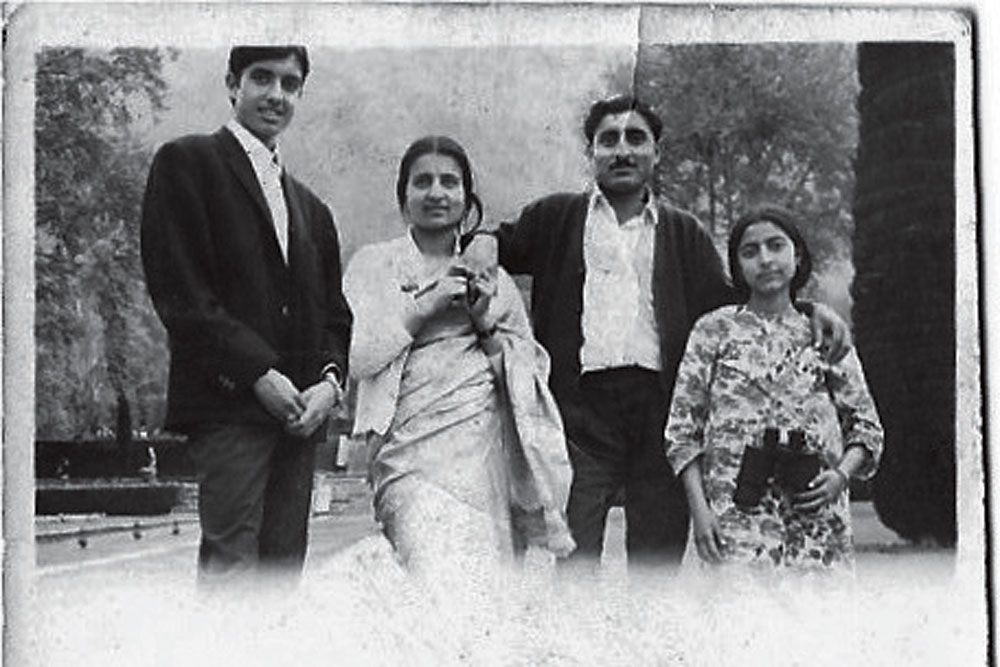
I remember visiting that temple with Shikara director Vidhu Vinod Chopra and meeting a desperate Pandit who said he wanted to become something in life. He said he could sing and asked us if he could get a chance. He sang “Ek raasta hai zindagi, jo tham gaye toh kuch nahi”. It was as if Kashmir’s most revered Goddess was trying to summarise our life through the song that man sang. We must embrace movement; we must not stagnate.
When I started working on Shikara with VC, as Vinod is called by his team, in the early days we ended up talking for hours about our memories of Kashmir. We realised that we had gone to the same school near Lal Chowk. On the exterior of that school building was a wooden pole by which one could slither down from the first floor to the ground. I was delighted to know that he and I had been among the few foolhardy boys who did it each day, though in very different time periods.
In those days, the film was just a seed. VC’s mother, Shanti Devi, had died in exile in Mumbai a few years earlier. He had read a short essay of mine about my mother. When we were living in poor conditions in Jammu, I wrote how my mother found a unique way of retaining her dignity. She would tell everyone that our house in Kashmir had 22 rooms. It made VC remember his mother. When we talked about this, he got very emotional remembering how he had continued to hold his mother’s hand even as the doctor said she had passed on.
I wondered if my parents talked in private about what had befallen us—they never gave the children any clue, only insisting that we focus on our studies. I often found myself struggling with separating one story from another
The brief on the film was that it has to be a love story in a time of terrible adversity. The idea was to show how through resilience we as a people defeated all odds pitted against us. I told VC about an incident we witnessed on April 4th, 1990, the day my family left Kashmir. I was to repeat that story years later on January 19th this year at a special preview of the film where we had invited 150 refugees from the Jagti camp. On April 4th, we, a family of four, sat huddled in a taxi that was to take us to Jammu. On the National Highway, as our taxi halted, we saw a man coming from the other side with a wheelbarrow. He pumped his fist in the air menacingly and shouted: “Maryu, Battav, Maryu (Die, Pandits Die)”. In that preview, I said that I do not know where that man was now, but that I wanted to tell him that we had survived. Ek raasta hai zindagi, jo tham gaye toh kuch nahi.
As I began working on the first draft of the story, I realised that I had the same problem which I am yet to overcome, which we are all yet to overcome: I had too many things to say. Had it gone that way, VC jokes sometimes, we would have ended up making a ten-hour film. A film could be made alone on January 19th. In my head, there were too many images. I wondered about how young couples slept like cattle with hundreds of others in a hall where old tattered saris became walls. They had absolutely no privacy to even touch each other. There was simply no place to go. I remembered when I first sat in front of a Desert Cooler and felt a gust of cool wind on my face. I remembered the white, wrinkled corpse of a man who had committed suicide by drowning in the canal because he could not cope with the harsh life of a tent. I remembered old women in minibuses struggling to communicate in Hindi and often invoking guffaws. I remembered a woman in one of the refugee camps who, I was told, refused to believe that her son had been killed by his own Muslim friends in Baramulla in a barber’s shop and made his favourite fish for him whenever they could afford. I wondered if my parents talked in private about what had befallen us—they never gave the children any clue, only insisting that we focus on our studies. I often found myself struggling with separating one story from another. At times like these, VC would ask me to write one scene each on a stick pad and then we would keep changing the sequence till it made sense.
The film began to take shape, firmed up by VC’s skills, and of Abhijat Joshi’s, the man who wrote films like Lage Raho Munnabhai and 3 Idiots. In 2016, after we cracked a major thread that runs through the film, VC was euphoric and we opened a bottle of Champagne inside his office and raised a toast to the life of Shanti and Shiv Kumar Dhar, the two main characters of Shikara. We stood in front of pictures of desolate Pandit houses in south Kashmir that we had put up on a screen to remind ourselves why were making this film in the first place.
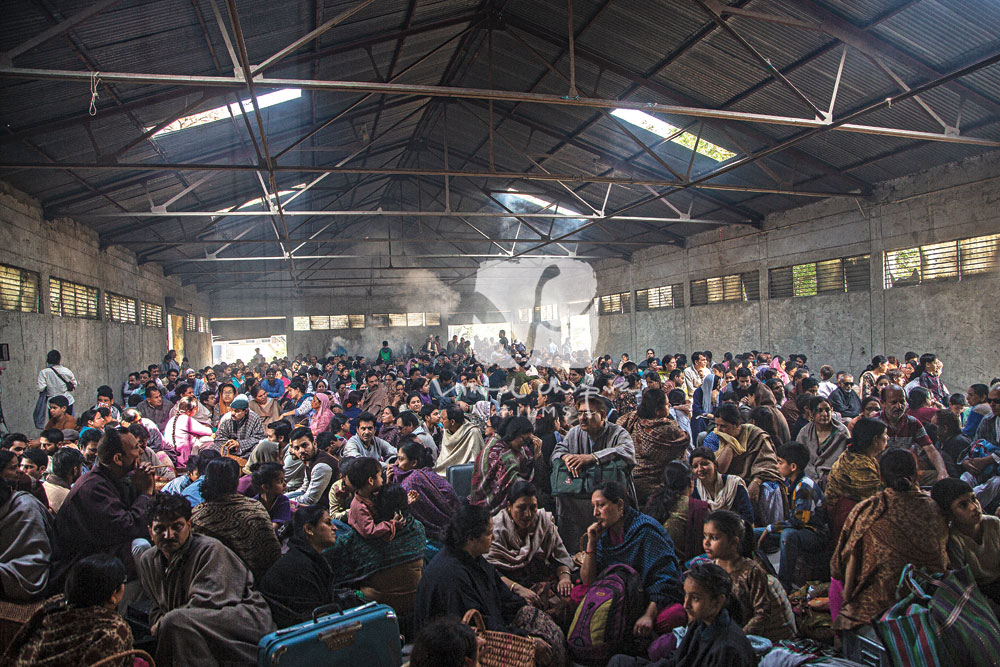
To begin shooting in Kashmir took time. In 2016, after terrorist commander Burhan Wani’s death, the Valley spiralled into major chaos. It took time to come out of it. We began shooting there a year later, in several sequences, as VC wanted to shoot in different seasons.
Afterwards, the post-exodus shooting began in Jammu. Here, we created a refugee camp in a locality where my family had spent several years in a one-room dwelling. I remember as a boy walking through a street, looking at houses on both sides and wondering if I could ever live again in such a house. During the shoot, I sneaked out one day and walked again on the same street. It felt very narrow.
At another place, in a warehouse, we created a transit camp where refugees would land up first and then start looking for accommodation they could afford. It is where we filmed refugees waiting in queue to get ration cards which became their primary source of identity and without which their existence would come into question. Shiv and Shanti waiting with hundreds of others in queues became the poster for Shikara.
As we began shooting, the anchor went around, asking the refugees how they left Kashmir in 1990. Those who got a chance to speak went on and on; the anchor had to interrupt them several times. They said everything in great detail, as if they were reliving every moment of it
As it was about to be filmed, I stood next to the camera, facing Shiv and Shanti. VC’s assistants were running all over, putting things in place. My eyes fell on a woman who was standing in the queue. She was weeping. I looked around and realised there were many others going through the same emotion and breaking down. When the shot was taken, and Vidhu wanted a retake, that woman walked to Vidhu and said: “I cannot do a third take.” Vidhu said he had just taken one and now he would take a second, not a third take. The woman looked at him and said: “No, my first take happened 30 years ago when I was standing in a real queue like this.”
At the refugee camp, the real refugees waited patiently as VC and his crew shot one scene after another. One of the actors, a well-known theatre artist, Bansi Lal Mattoo, was playing an old man who in desperation keeps shouting, beseeching people to take him back to Kashmir. By the time the film was made, he had passed away. He had been suffering from cancer even as he carried on with the shoot for days, politely refusing food, making an excuse that he had a stomach upset.
At the preview in Delhi on 19th January this year, his daughter Sangeeta broke down while remembering her father. She recalled that a few years ago she finally took her son, born in Jammu, to Kashmir. He was eight. As they were standing outside what was once their home in Rainawari locality, Sangeeta said she suddenly remembered that her son wore a yellow shirt over brown shorts. “It was uncanny, because when I left that street in 1990, even I was eight, and I remembered that I too wore a yellow shirt over brown shorts.”
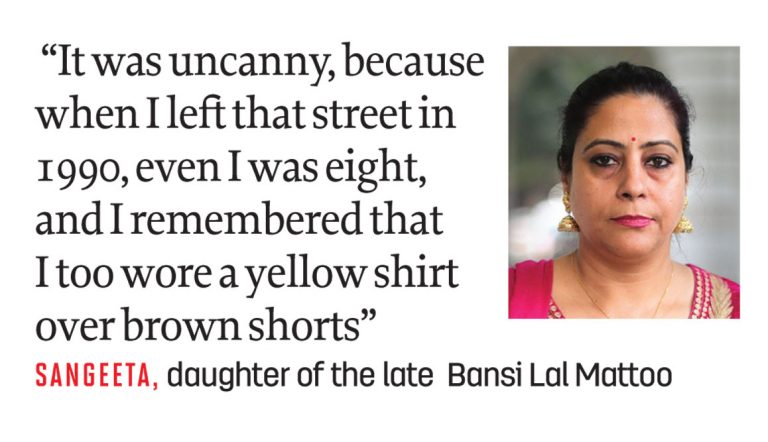
At the preview in Delhi, VC addressed the refugees among the audience. They had come a day before from Jagti in buses, singing paeans to Ganesha during their journey. As they watched a part of the film about January 19th, many broke down. VC told them that successive governments had failed them, the majority community in Kashmir had failed them, and so had the rest of India.
“Now is the time to say sorry to Kashmiri Pandits,” VC said.
That acknowledgement was necessary if any reconciliation was to take place. That reconciliation cannot take place between a victim and a terrorist. But it can happen between victims and those who did not stand up for them. It can happen between victims and those who are not in denial that the exodus took place because the majority community in Kashmir looked the other way.
After the event, some of us gathered at a friend’s house. The day was January 19th. Thirty years ago, that night turned into hell for us. But this night, we wanted to celebrate. A friend and I remembered trashy Hindi film songs of the nineties which our teenage hearts would long for in Jammu. But back then, we did not even have a recorder to play them on. So we and many among my generation hopped from one minibus to another in which dandy drivers with stickers like ‘Love for sale, 100 per cent discount’ on their dashboards, would play them in a loop. We ate, we drank, and we laughed. And we imitated older uncles and their peculiar way of dancing during marriages.
Shikara releases on February 7th. Many Pandit friends are eagerly waiting to watch it. Many got very emotional after watching the trailer and are not sure if they can sit through the entire film.
But I say they must. Ek raasta hai zindagi, jo tham gaye toh kuch nahi.
Also Read
‘Now is the time to say Sorry’ ~ by Vidhu Vinod Chopra
‘They say it is raining in Kashmir’ ~ by Ajoy Bhan
About The Author
MOst Popular
3

/wp-content/uploads/2025/07/Cover_Crashcause.jpg)






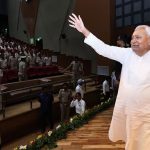


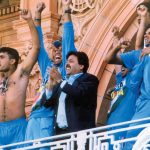


More Columns
Bihar: On the Road to Progress Open Avenues
The Bihar Model: Balancing Governance, Growth and Inclusion Open Avenues
Caution: Contents May Be Delicious V Shoba